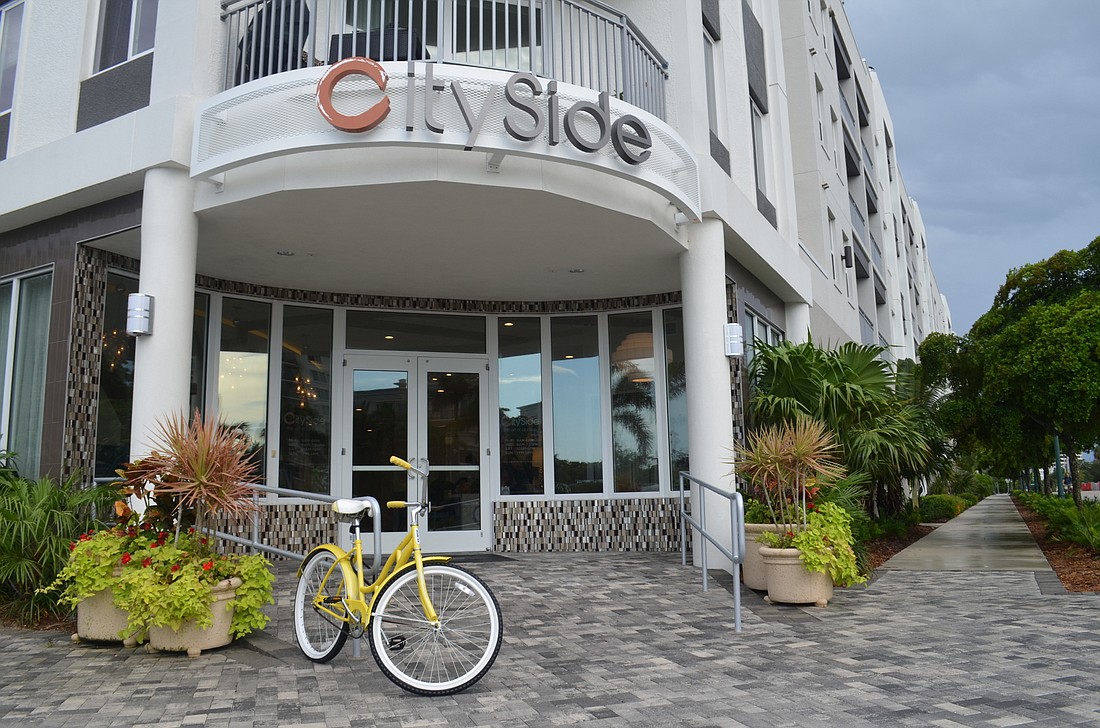- July 26, 2024
-
-
Loading

Loading

A newly formed committee of Rosemary District residents, developers and architects is optimistic its work will lead to more thoughtful growth in a neighborhood that has been the home of an ongoing spike in new building.
The six-member group, part of the Rosemary District Association, formed specifically to grapple with the future of the regulations that sparked the recent growth in the area. The Rosemary Residential Overlay District, established in 2014, gave developers the right to build residential projects with up to 75 units per acre — three times the maximum density previously allowed in the neighborhood.
The effect was palpable. In three years, the city approved more than 1,500 units for the Rosemary District. The overlay district came with a cap on new residential development, allowing for a maximum of 1,775 units before the increased density was supposed to expire.
Last year, the City Commission asked staff to start researching potential new building regulations for the Rosemary District after the overlay district reached its cap. Independently, Rosemary District stakeholders were meeting to discuss what they wanted their rapidly changing neighborhood to ultimately look like.
It turned out to be a fortuitous confluence of events. Today, city staff and Rosemary District stakeholders are in the midst of an ongoing conversation about a revamped density-bonus system. The goal, both sides say, is to create new rules that allow for continued growth in the neighborhood while addressing the needs of its growing population.
Through a survey of residents, the Rosemary District Association has identified a series of priorities for the future of the neighborhood. People are worried about a lack of parks and open space. They want to see better lighting along the streets for improved security and improved sidewalks for enhanced walkability. They would like for some of the new development to be more affordable, allowing for a more diverse community.
As a result, the overlay district committee suggests an incentive system that asks developers to address one of those community concerns in exchange for increased density.
Under the existing overlay district, developers have a right to build 75 units per acre until that cap is hit. Critics of that system said it dumped new residents into a neighborhood that wasn’t prepared to handle them.
Pamela Mones, a resident and member of the overlay district committee, thinks the incentives will allow for more thoughtful growth without tamping down the new vitality of a once-languishing neighborhood.
“If you want more density (as a developer), this is how you can achieve that,” Mones said. “This is how we all work together so you get what you want, and the community gets what it wants and needs.”
Mones was excited by the group’s work — particularly because she believes the city is actually listening.
Steve Cover, the city’s planning director, said the neighborhood input is aligned with staff’s thinking on what would work best for the Rosemary District. He said staff was able to suggest some things the neighborhood was amenable to, as well, such as a potential incentive for incorporating green building technology.
“I think this has been a really good example of the community working with their leadership and the city to present some really good ideas,” Cover said.
Cover said staff still had to finalize the details of any incentive system, something he hoped to complete before the end of the year. He was hopeful that, if new regulations proved successful in the Rosemary District, they could potentially be expanded to other portions of the city.
Mones said neighborhood stakeholders were just as excited about the prospect of being a pioneer for a new approach to growth in Sarasota.
“We might be able to set a new path for how the city looks at neighborhood development, using the Rosemary District as sort of a template for seeing how that might work,” Mones said.